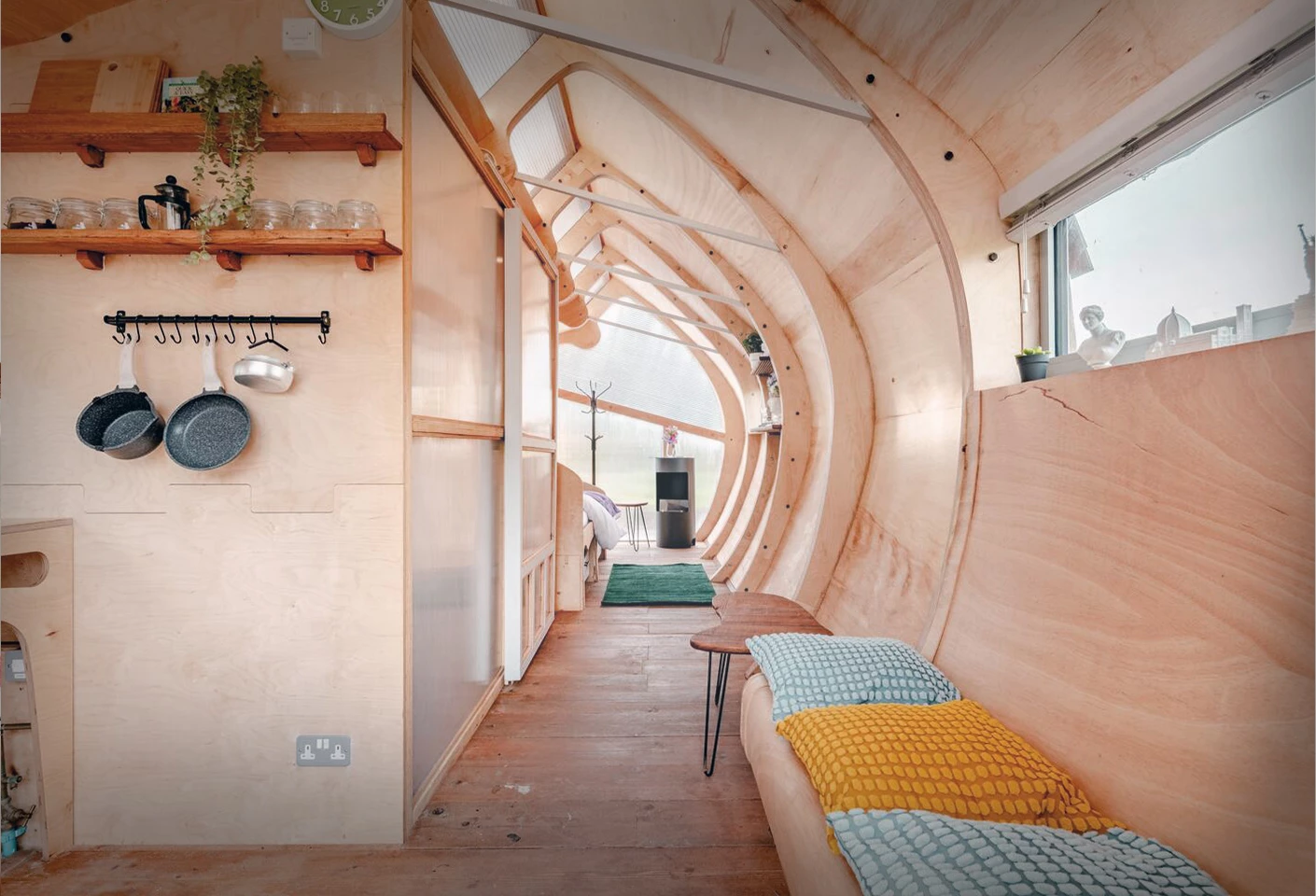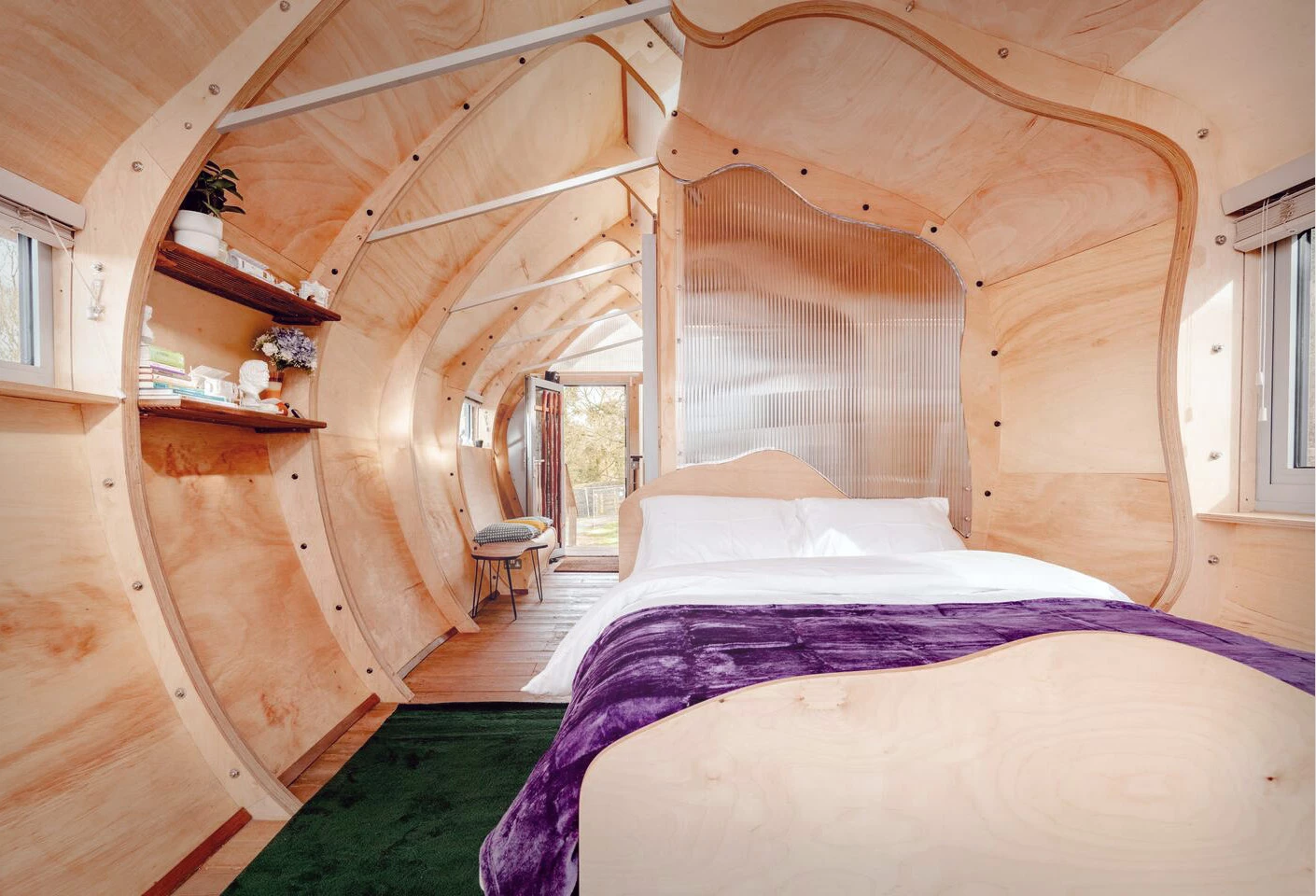Tiny houses come in all sorts of shapes and sizes, but this is the first example we've seen that's modeled after a World War II airplane. Named the Monocoque Cabin, the unusual dwelling is defined by an eye-catching curving exterior and comes with lots of options, including its interior layout and the ability to run off-the-grid.
The Monocoque Cabin came about following Airbnb's 2022 OMG! Fund to find crazy home ideas. British architect Peter Markos entered the competition and was declared one of the winners, receiving US$100,000 prize money. This was sufficient for Markos to found his own studio and to develop his vision for an airplane-inspired tiny house, in collaboration with prefab specialists BlokBuild and engineers Price & Myers.
"The concept of the Monocoque Cabin originated from a fascination with aerospace and automotive construction techniques known for their efficient use of materials," explains Markos. "This led to the question: Why not integrate such methods into the built environment? Monocoques are structural systems in which loads are supported by an object's external skin, creating a stiff, strong, light structure similar to an 'eggshell'. These are structures often used in aerospace and automotive design.
"The Monocoque Cabin takes inspiration from the WWII de Havilland Mosquito monocoque structure. These fighter planes are the most outstanding examples of monocoque structures. The Monocoque Cabin is made from various timber materials, carefully chosen to connect with its rural setting. The materials age gracefully and gray over time, after years, you find yourself with a more beautiful structure than the one that was first made."

While it doesn't show plane-based inspiration as clearly as the Aero Tiny, the Monocoque Cabin is a definite change from the typical cottage-like tiny house. It has a length of 9 m (almost 30 ft) and a width of 3.3 m (roughly 11 ft), and is finished in a curving exterior of cedar shingles. It's not based on wheels like a traditional tiny house, though Markos says it's designed to be easy to disassemble and relocate within a few days.
The home is accessed by some steps and a deck area, which opens onto a shared living room and kitchen. This includes a sofa, a breakfast bar and a basic kitchen unit with a sink, shelving and space for a portable stove and small fridge.
The main living area connects to a bathroom with a shower, sink, and toilet. At the end farthest away from the entrance is a relatively spacious-looking bedroom with a double bed and generous glazing.
The decor throughout the tiny house is very utilitarian with its mixture of plywood and polycarbonate (plus a few glass) windows, along with simple wooden furniture, however the Monocoque Cabin has lots of different options available and its layout and furniture can be chosen to suit.

The tiny house can also be sold as either a basic shell or turnkey model, and it can optionally run fully off-the-grid with solar panels and a rainwater capture system. We've no word on the pricing for this one but those interested can get in touch with the studio directly.
Source: Markos Design Workshop









